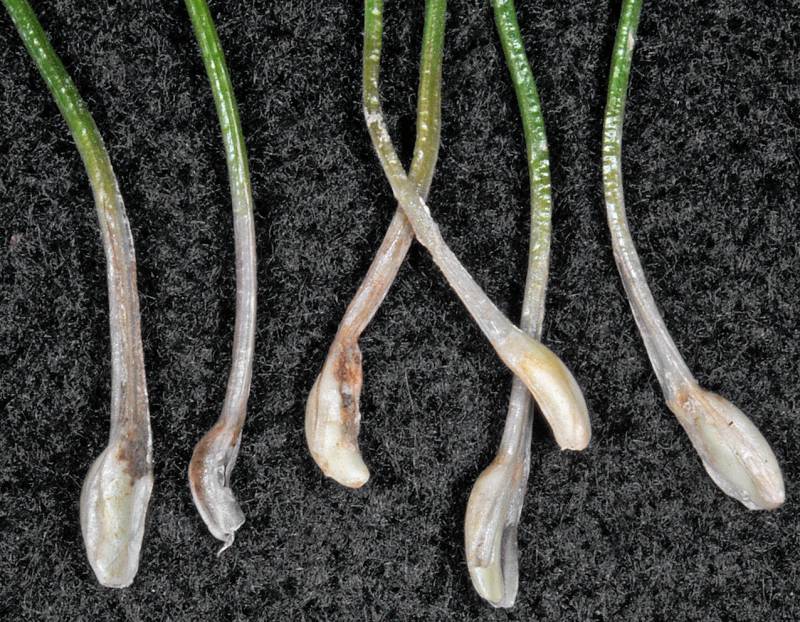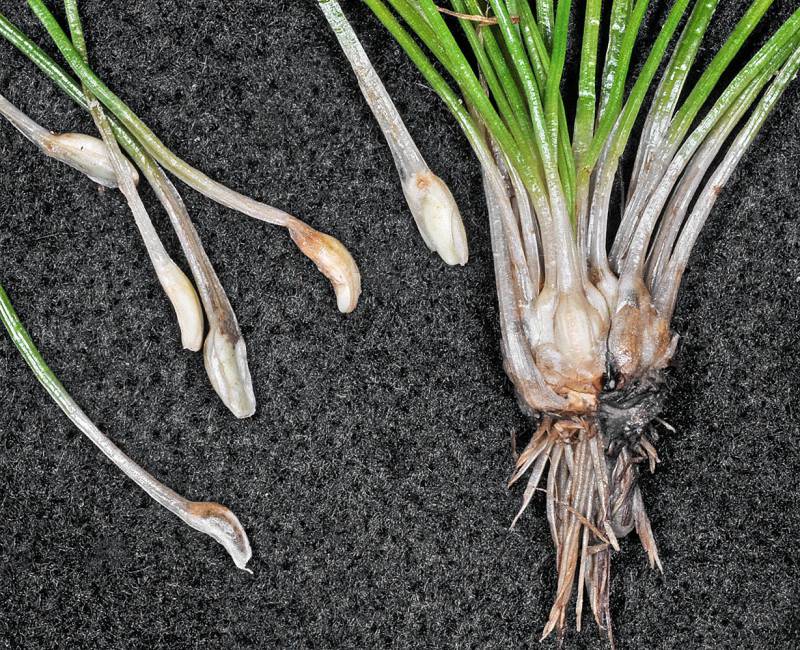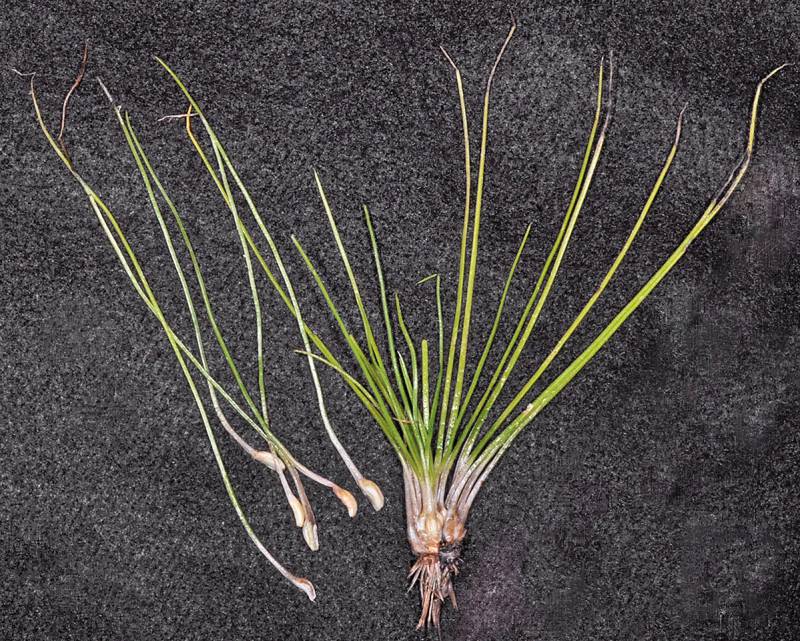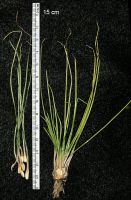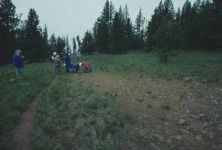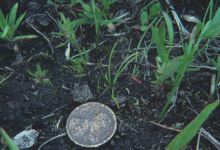Distribution: Occurring chiefly east of the Cascades crest in Washington; southern Britich Columbia to California, east to northwestern Montana and Utah.
Habitat: Plants amphibious, in and around temporary lakes and pools, generally at low to middle elevations.
Origin: Native
Growth Duration: Perennial
Conservation Status: Review Group 1 in Washington (WANHP)
Perennial herb, aquatic to terrestrial; rootstock buried and corm-like, nearly globose, with 2 lobes, corky, brown.
Leaves deciduous, simple, in tufts somewhat resembling grass, spirally arranged on top of stem, erect to spreading, rigid but not brittle, up to 25 cm, linear above base, tapered to apex, bright green with pale to brown or shiny black base.
Sporangia solitary, embedded in enlarged leaf base, less than 1 cm, less than 3/4 covered by a translucent membrane, male or female; male spores less than 10,000, 0.025-0.035 mm, somewhat bean-shaped, brown in mass; female spores 20-200, 0.3-0.5 mm, spheric, white, ridged.
Publication: Trans. Acad. Sci. St. Louis. 4: 385. 1882.
Isoetes nuda Engelm.
Isoetes underwoodii L.F. Hend.
PNW Herbaria: Specimen records of Isoetes howellii in the Consortium of Pacific Northwest Herbaria database
WA Flora Checklist: Isoetes howellii checklist entry
OregonFlora: Isoetes howellii information
E-Flora BC: Isoetes howellii atlas page
CalPhotos: Isoetes howellii photos

